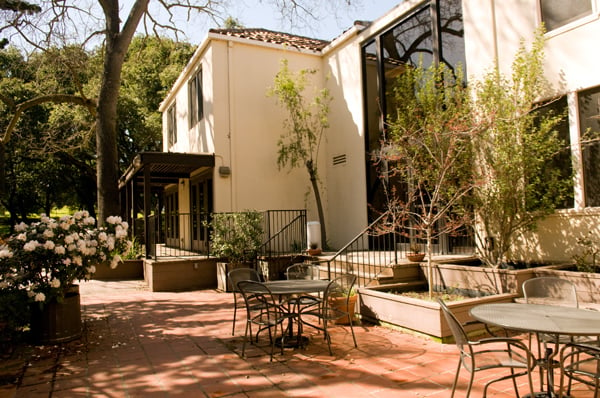“It’s been a year since I’ve been home,” Burcu Gulsah Alici ’23 said. “This was the best opportunity I could get.”
Alici is from Turkey, but she spent her fall quarter on Stanford’s campus due to uncertainty caused by the COVID-19 pandemic. Now, just weeks into the seven-week winter break that began on Nov. 21, international students like Alici face the unique decision of whether to return to their home countries and risk spreading the coronavirus, or to spend the holiday season on campus, away from home and family.
Due to the recent case spike in Santa Clara County, the University is “discouraging international students from international travel during the break,” according to Student Affairs Spokesperson Pat Harris. The University recently announced they would be proceeding with plans to provide on-campus housing to frosh, sophomores and new transfer students during the winter quarter.
Stanford will take a phased approach, with returning students arriving two weeks later than initially planned. However, undergraduates with special circumstances, resident assistants, and new transfer students will still move to campus the week of Jan. 4.
“All students are required to comply with Santa Clara County mandatory health directives that require anyone who returns to this county after traveling more than 150 miles away to quarantine for 14 days,” Harris wrote in a statement to The Daily.
This requirement complicates students’ decisions about whether to leave campus for home. Some do not want to spend two weeks in quarantine. Alici, who returned to Turkey for the winter break, said that she decided her trip was worth it due to the lengthy break. The added time allowed her to see her family, while also being able to quarantine before returning to campus.
“When I come back home I feel like it’s a vacation,” Alici said. “And when I’m on campus I actually feel like I’m still a student.”
Residential & Dining Enterprises sent out an email in early October announcing that undergraduate students already on campus would be allowed to remain on campus for winter break, given they filled out a form requesting to do so. Students could opt for a partial stay, in which they can remain on campus until Dec. 12, or a complete stay through the start of winter quarter.
Darryl Thompson ’23, a student from Ghana, opted for the partial stay and is currently residing in Escondido Village Graduate Residences. After three weeks, he plans to spend the rest of winter break with a Ghanaian family he knows in the U.S.
Thompson said that he prefers to stay in close proximity to campus when taking classes, as opposed to learning remotely from Ghana.
“There’s something special about the in-person interactions that you’re having,” Thompson said. “Classes and the ability to ask your own questions and get them answered in real time, as opposed to listening to a recorded version.”
He added that the time zone difference between his home country and Stanford played a major role in his decision, saying that “if you’re anything more than about five hours away, you are going to feel some sort of disconnect with the community in which you’re in.”
Thompson said he empathized with his friends who are learning remotely from their home country. Many say they struggle with inconvenient office hours and exam times, as well as staying up late at night for classes.
Being far from home has its trade-offs according to Lara Arikan ’23, a student from Turkey who chose to stay on campus for winter break. “I really miss the people that I left behind,” Arikan said. “It is a trade off, but I know that I will ultimately go back. I don’t feel like I have been cheated out of something.”
Housing and other expenses can create an obstacle for students staying on campus over break. For example, Alici was charged $6,000 in living fees over summer break. “I know some universities did not do that, or they significantly decreased their fees,” Alici said.
Despite pushback, Stanford held firm on not reducing housing and meal costs in the summer. Peer institutions including Harvard, Duke and MIT considerably reduced their fees for some students. Harris wrote that while tuition remains unchanged for the winter quarter, “We are focused on providing financial assistance to those in need. Our Financial Aid Office encourages students in financial distress to contact the office to discuss their individual circumstances.”
Students remain grateful for the assistance that has been provided. Arikan said that the University has been accommodating, helping her work through the logistics of staying on campus.
For many, a return date to their home country remains up in the air, due to the unpredictability of the pandemic. Until then, students are doing their best to adapt to an uncertain reality, Thompson said.
“I do keep in touch with” family “as much as I can,” Thompson said. As for when he plans to return to Ghana, “I don’t know for sure, but it’s something that I’ve come to terms with.”
Contact Mimia Ousilas at mimiaousilas7 ‘at’ gmail.com
